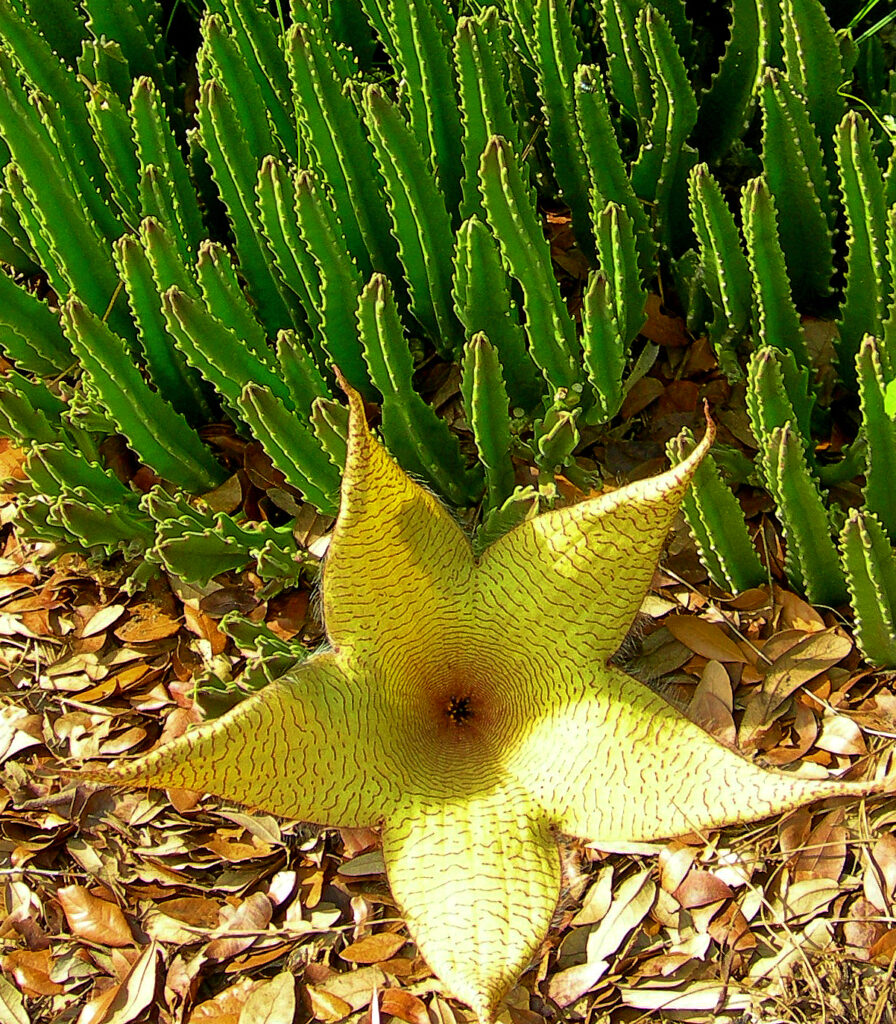Even the plants can get into the Halloween spirit. Some plants display the colors of the season, black or orange leaves or blooms; some have hauntingly ghost-like silver foliage, flowers that resemble bats, and blooms that smell like death. How about a patch of the Carrion flower, something wickedly stinky in the garden, to add a Halloween touch to the landscape?

The gag-inducing smell of Stapelia gigantea, also known as the Carrion flower, African Starfish flower, and Giant Toad plant, comes from the large and fleshy flowers, pun intended. The blooms are produced as a single or small group. Flowers first appear as balloon-shaped buds and open to 11 to 16 inches across. They have five pointed lobes and are star-shaped. The flower color is light yellow to cream with red or crimson bands and is covered with fine, purple hairs. The texture and smell of the flower are that of rotting flesh emulating carrion, and the putrid smell attracts flies for pollination. After the blooms, the fruit is a spindle-shaped capsule that splits to expose seeds with tufts of hairs at the apex.
Stapelia is classified in the same family as milkweed, Asclepiadaceae, though new information may classify it in the family with Oleander, Apocynaceae. It is sometimes mistaken for a cactus. It is a succulent, low-growing, 4 to 8 inches tall with thick, 1-inch wide, upright, fleshy stems. The branches are 4-angled, do not have spines, and are covered in fine hairs. The stems branch at the base and spread across the landscape slowly.
Carrion Flower is found throughout the warm areas of the world. It originated in the desert regions of South Africa and is an interesting oddity to add to the landscape. Choose a frost-free location in full sun, though some shade is tolerated. Bright sun can cause the stems to turn red at the ends. The soil must be very well-draining, and sandy soil is well-tolerated. Stapelia is moderately salt-tolerant.
An excellent choice for plant lovers, the Carrion flower is used in succulent gardens, as a ground cover, and in containers indoors and outside. Stapelia requires bright light as a houseplant, such as on a windowsill or sunroom. Grow Stapelia for its unusual, spectacular, scary, stinky flowers, which appear throughout the year but most often from late summer into fall. Some experts report a tendency for Stapelia gigantea to produce more blooms as the days get shorter, just in time for Halloween.
This column first appeared in the Treasure Coast Newspapers.
Leave a Reply